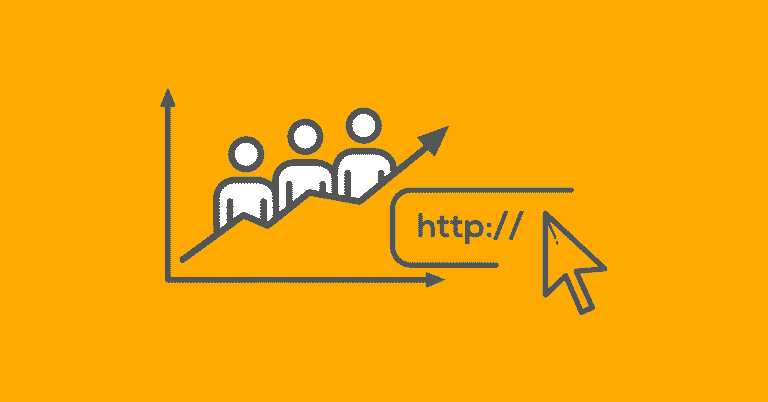In today’s competitive business landscape, reducing costs while maintaining high-quality services is a constant challenge for Australian companies. With rising expenses, global competition, and shifting market demands, businesses are increasingly turning to Artificial Intelligence (AI) to streamline operations, boost efficiency, and, most importantly, cut costs.
AI technologies are not just for large corporations anymore. Small and medium-sized enterprises (SMEs) in Australia are also leveraging AI to optimize their processes, enhance productivity, and make smarter decisions that help reduce operational costs. In this blog, we’ll explore how AI is helping Australian businesses of all sizes reduce costs across various sectors, from customer service to manufacturing, logistics, and more.
1. Automating Routine Tasks: Saving Time and Reducing Labor Costs
One of the most significant ways AI is helping Australian businesses reduce costs is by automating repetitive, mundane tasks. Routine activities like data entry, invoicing, scheduling, and customer support can take up a lot of time and resources. But with the help of AI-powered tools, businesses can automate these tasks and free up valuable human resources for more strategic work.
For example, Xero, a popular Australian accounting software, uses AI to automate bookkeeping tasks like expense tracking, invoice processing, and financial reconciliation. This not only reduces the need for human accountants to manually input data but also minimizes the chances of errors, saving businesses time and money.
In customer service, AI-driven chatbots can handle common inquiries, troubleshoot problems, and even process transactions without human intervention. This significantly reduces the need for a large customer support team while improving response times and service quality. Domino’s Australia uses its AI-powered bot to handle orders and customer service, cutting down on the labor costs traditionally associated with running a call center.
2. Optimizing Inventory Management: Reducing Wastage and Stockouts
For businesses in retail and manufacturing, managing inventory efficiently is crucial to reducing costs. Overstocking can lead to excessive storage fees and wastage, while stockouts result in lost sales and damaged customer relationships. AI can help businesses strike the right balance between supply and demand, optimizing inventory management and ensuring that businesses only order what they need.
AI-powered tools use predictive analytics to forecast demand patterns based on historical data, seasonality, trends, and external factors. With this information, businesses can adjust their stock levels, reduce waste, and avoid costly stockouts.
In Australia, companies like Bunnings Warehouse and Woolworths are already using AI-driven solutions to better manage their inventory. AI helps them track which products are moving quickly and which are lagging behind, allowing them to make more informed purchasing decisions and reduce unnecessary stock.
3. Enhancing Supply Chain Efficiency: Cutting Operational Costs
Supply chain management is one of the most cost-sensitive areas of any business. Disruptions, inefficiencies, and delays can lead to substantial financial losses. AI is playing a key role in improving the efficiency of supply chains by optimizing route planning, forecasting demand, and automating procurement processes.
Australian logistics companies like Australia Post are utilizing AI to optimize delivery routes and improve fleet management. AI algorithms analyze real-time traffic data, weather conditions, and delivery schedules to create the most efficient routes for drivers, reducing fuel consumption, delivery times, and overall transportation costs.
Moreover, AI-powered systems can predict potential disruptions in the supply chain, whether it’s a supplier delay or a sudden change in customer demand, allowing businesses to proactively adjust their operations and minimize costs.
4. Improving Marketing ROI: Smarter Targeting and Personalization
Marketing is often a significant expenditure for Australian businesses, but AI is helping companies make their marketing budgets go further by improving targeting and personalization. Traditional marketing strategies can be expensive and inefficient, especially when businesses are not sure whether their efforts are reaching the right audience.
AI tools can analyze vast amounts of customer data, segment audiences, and predict which messages and offers will resonate with different customer groups. With AI-driven predictive analytics, businesses can identify the best times to send marketing messages, the right channels to use, and the most effective content to create—all of which lead to higher conversion rates and a better return on investment (ROI).
For instance, The Iconic, an Australian online retailer, uses AI to recommend products to customers based on their browsing and purchase history. This kind of personalized marketing boosts sales while reducing the cost of irrelevant ads or promotional efforts that don’t convert.
Moreover, AI-powered automation tools can manage campaigns, optimizing the bidding for digital ads, adjusting strategies in real time, and reducing the manual labor needed to run marketing efforts.
5. Reducing Energy Costs: Smart Building Management
Energy consumption is a significant operating cost for many Australian businesses, particularly in industries like manufacturing, retail, and office management. AI is helping companies reduce energy costs through smart building systems and automated energy management solutions.
AI-powered systems can learn a building’s energy usage patterns, automatically adjust heating, ventilation, air conditioning (HVAC) systems, and lighting based on occupancy, time of day, and environmental conditions. These systems ensure that energy is only used when needed, reducing waste and saving on electricity bills.
For example, AMP Capital has implemented AI-driven smart building technologies in its Australian office buildings, improving energy efficiency and reducing operational costs. By using AI to adjust heating and cooling based on real-time occupancy data, AMP Capital has been able to cut down on its energy consumption while maintaining a comfortable working environment for employees.
6. AI-Driven Decision-Making: Reducing Risk and Improving Financial Management
AI isn’t just about automating processes—it also helps businesses make more informed decisions that reduce risks and minimize unnecessary costs. AI-driven analytics tools help businesses gather insights from their data, enabling them to make more accurate forecasts and smarter financial decisions.
For instance, AI can be used to analyze market trends, customer feedback, and competitive data to inform pricing strategies, product development, and investment decisions. By leveraging predictive analytics, Australian businesses can avoid making costly mistakes, such as overinvesting in unprofitable products or expanding into markets with low potential.
AI-based financial forecasting tools can also help businesses predict cash flow, identify upcoming expenses, and avoid financial bottlenecks. For small businesses that don’t have a dedicated financial team, AI can provide critical insights and help manage costs more effectively.
7. Reducing Labor Costs: Intelligent Workforce Management
Labor is often one of the highest operational costs for Australian businesses, but AI is making it possible to manage workforce scheduling and productivity more efficiently. AI-powered workforce management tools can predict demand fluctuations and adjust staffing levels accordingly, ensuring that businesses don’t overstaff or understaff during peak and off-peak hours.
For example, McDonald’s Australia uses AI to optimize shift scheduling, ensuring that they have enough staff during busy hours but aren’t overstaffed during slower periods. This reduces payroll costs while ensuring that customers continue to receive fast and efficient service.
Furthermore, AI can help with employee training by providing personalized learning and development programs that enhance skills without the need for costly in-person sessions. By providing virtual training through AI-powered platforms, businesses can keep their workforce up to date while reducing training costs.
8. AI in Healthcare: Reducing Costs for the Medical Industry
The healthcare sector in Australia is one of the most vital but costly industries. However, AI is helping hospitals and healthcare providers reduce costs while improving patient care. AI tools are being used to optimize hospital operations, manage patient flow, and even assist in medical diagnostics.
AI-based diagnostic tools help doctors identify diseases or conditions more quickly and accurately, reducing the need for expensive tests and treatments. For example, AI algorithms can analyze medical imaging data and detect early signs of diseases like cancer, potentially saving lives while reducing the cost of treatment by catching problems early.
Hospitals are also using AI to improve patient scheduling, track inventory, and predict patient admissions, all of which streamline operations and reduce unnecessary costs.
Conclusion: The Cost-Reducing Power of AI for Australian Businesses
AI is rapidly transforming the way Australian businesses operate, offering powerful solutions to reduce costs across a variety of sectors. By automating routine tasks, optimizing supply chains, improving marketing efforts, and enabling smarter decision-making, AI is helping businesses lower expenses while maintaining or even improving service quality.
For Australian businesses looking to stay competitive, adopting AI isn’t just an option—it’s a necessity. Whether you’re a small business or a large enterprise, AI has the potential to unlock significant cost savings, improve efficiency, and position your company for long-term success.
As AI technology continues to evolve, its ability to drive down costs and improve operational efficiency will only grow. The businesses that embrace AI now will be the ones leading the charge into the future.








